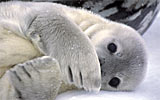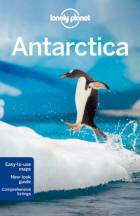|
The Expedition
The Terra Nova
expedition as it became known was a far reaching and ambitious
programme of scientific research and discovery that is best
known for the ultimately fatal attempt to reach the south
pole by Scott, Bowers, Evans, Oates and Wilson.
The Terra Nova (Latin
for Newfoundland) had worked the arctic and sub-arctic seas
proving her worth for many years before she was called upon
for expedition work.
She was purchased for the
British National Antarctic Expedition in 1910 for £12,000
a second choice after Captain Scott was unable to obtain
the Discovery built especially for his earlier 1901-1904
Antarctic Expedition and now owned by and working for the
Hudson Bay Company. The Terra Nova however was a bargain
particularly compared to the £50,000 that the Discovery
had cost ten years earlier.
The Terra Nova was well suited
to this work being reinforced from bow to stern with seven
feet of oak to protect her against the Arctic ice. Scott
said of her.. "a wonderfully fine ice ship.... As she
bumped the floes with mighty shocks, crushing and grinding
a way through some, twisting and turning to avoid others,
she seemed like a living thing fighting a great fight."
She was however 25 years
old by 1910 and had a tendency to take on water above and
below the waterline. Time spent at the bilge pumps was a
constant necessity for the crew throughout the voyage. Leakage
through the supposedly caulked main deck during rain or
rough weather continually dripped on those below, the worst
position in this regard being for those under the stables.
The final port of call for
the Terra Nova before setting off for Antarctica
was Lyttleton in New Zealand. Here she was placed in dry
dock to find a leak that kept the crew and bilge pumps in
almost constant motion since leaving Britain. Once afloat
again, amongst other stores, 19 Manchurian ponies a token
dog pack of 33 animals and three expensive motor sledges
were loaded aboard.
She was dangerously overloaded
when she sailed for Antarctica and indeed came close to
being lost in a storm at latitude 52° South. Great
seas washed again and again across the ship's deck loosening
sacks of coal and crates of petrol for the tractors. The
crew repeatedly waded across the deck to retrieve and make
fast the moving cargo that was battering around causing
more damage as it did so. Many sacks of coal were simply
thrown overboard.
One of the dogs (Osman) was
washed overboard only to have the next wave wash him back
again, another poor animal was not so lucky.
The water washing across
the decks found its way into the engine room and coal bunkers,
the fires were put out in the engine room and coal dust
was washed into the bilges. Here it mixed with oil from
an earlier spill and formed a thick slurry that clogged
the bilge pumps. Access to the bilge pump intake was through
the main hold, but had the hatch been opened in the storm,
the ship would surely have sunk through the water taken
on. While all hands bailed, the engineers pierced two bulkheads,
one wooden, one iron, to reach the bilge intakes.
Bowers entered the hold and
diving through water and muck, managed to clear the valves,
those on deck at the pump handles cheering when the outflow
pipe spewed forth the bilge contents once again.
This expedition of the Terra
Nova is notable also for the fact that it is so well documented
due to the presence on board of two men:
Apsley Cherry-Garrard.
A friend of the expeditions Zoologist Wilson who had paid £1000
by contribution to join. "Cherry" as he was known
was a young recent graduate, and at 24 the expeditions youngest
member not really qualified for anything - though he became
an invaluable expedition member. His book
Herbert Ponting.
The expedition camera man and photographer. Ponting was
a highly skilled and accomplished photographer and artist,
some of his pictures and his film are still regarded as
classics today.
The Terra
Nova entered the pack on December the 9th 1910, progress
was slow as the ice was heavy, much valuable coal was consumed
en route forcing passage through it. From Cherry-Garrards
book:
"The
Terra Nova proved a wonderfully fine ice ship. Bower's
middle watch especially became famous for the way in which
he put the ship at the ice, and more than once Scott was
alarmed by the great shock and collisions which were the
result ............ But Bowers never hurt the ship, and
she gallantly responded to all calls made on her".
Scott himself
put it:
The ship behaved
splendidly - no other ship, not even the Discovery, would
have come through so well. Certainly the Nimrod would never
have reached the south water had she been caught in such
pack".
Eventually the
Terra Nova reached McMurdo Sound but couldn't
get as far south as the Discovery had due the heaviness
of the pack ice. She stopped near a place re-named Cape
Evans (formerly the "skuarry" after the birds
that nested there) to unload and establish camp. Even here
she had to be unloaded over a mile off shore and all the
supplies dragged across the ice. It was during this
unloading that one of the motor sledges broke through the
ice and sank, lost to the expedition forever.
In early February
the Terra Nova steamed into the Bay of Whales on
a last exploratory mission before returning to New Zealand
for the winter. Here she met two dog teams of Amundsen 's
expedition who were out for the day unloading cargo from
the Fram. Three from the Terra Nova went to the Norwegians
camp , Framheim for breakfast and later in the day, the
Norwegians lunched aboard the Terra Nova. After dropping
supplies off back at Cape Evans and unloading two ponies
(that had to swim ashore) the Terra Nova left for
New Zealand.
The next time
the Terra Nova sailed into McMurdo Sound in 1912
to re-supply the expedition, Scott and four others would
be away on their attempt at reaching the South Pole.
In 1913 when
she arrived to bring the explorers back, the landfall was
traumatic in a way that had never been anticipated. The
wardroom table on Terra Nova was set for a celebration
reunion dinner.
The ship was
spotted from the shore and the usual maritime greeting "Are
you all well" went out, the shouted response delivered
the dreadful information.
Two days later
Cape Evans had been abandoned and all were on board and
heading back to New Zealand.
More about Robert
Falcon Scott and this expedition
Historical photographs on
this page by permission of National
Library of Australia
|




![]() USA |
USA |
![]() UK
UK![]() Free world delivery
Free world delivery
![]() DVD |
DVD |
![]() DVD
DVD